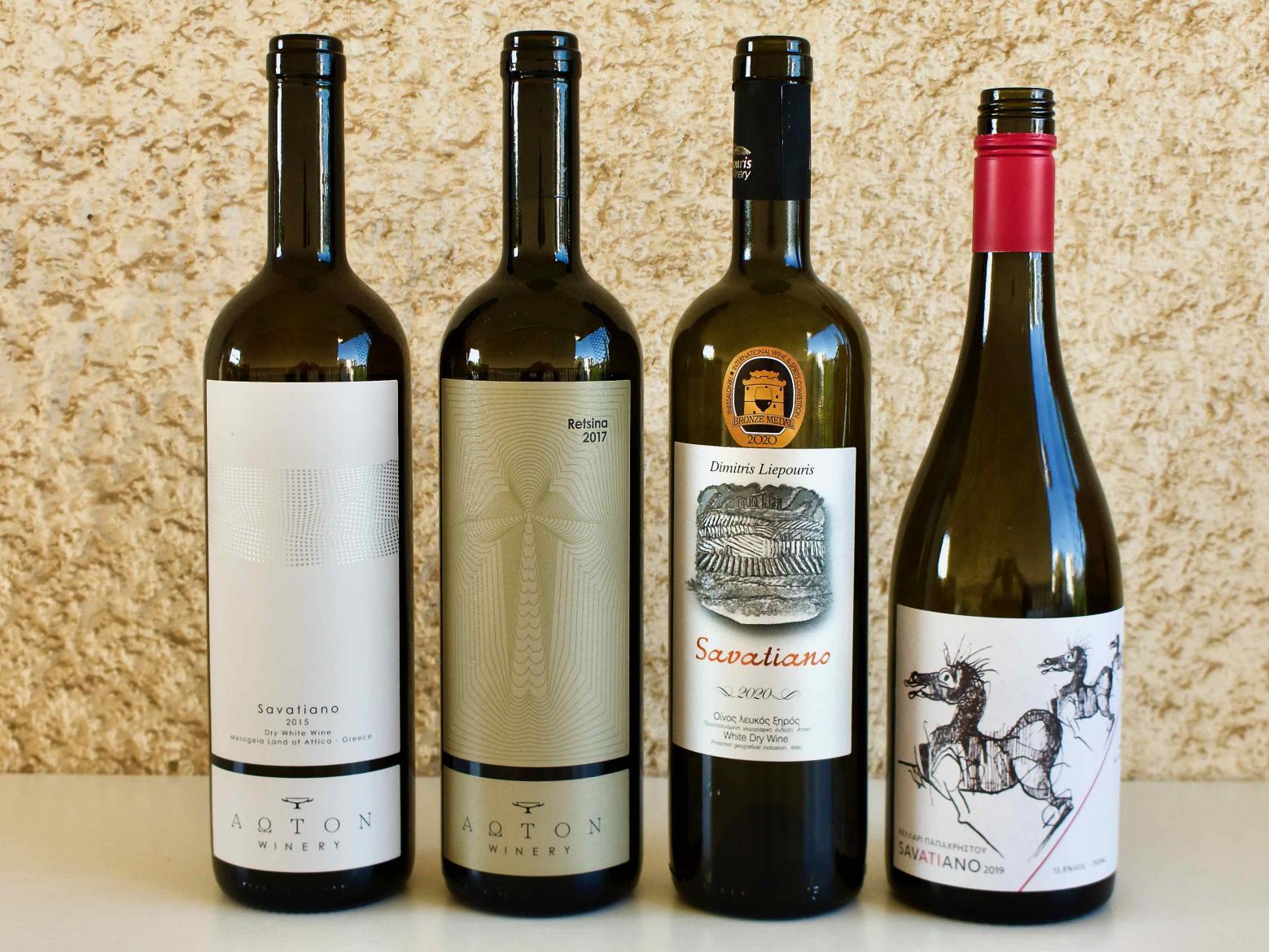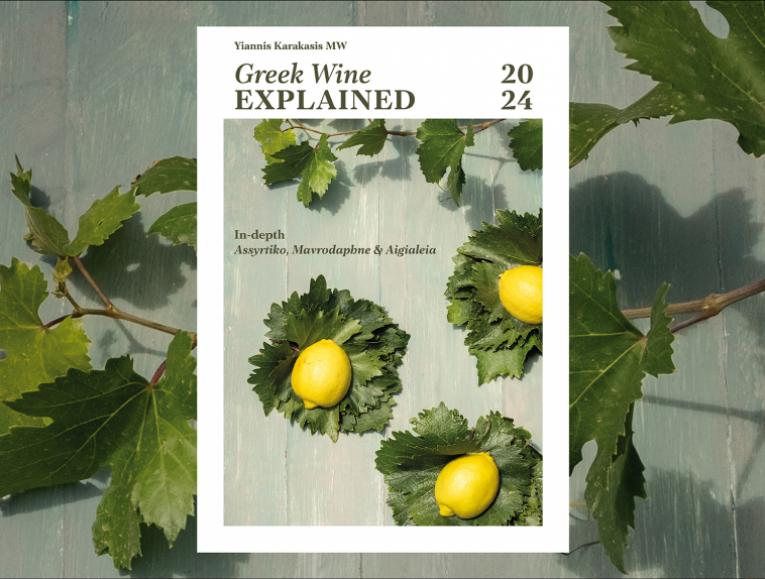The Metamorphosis of Savatiano Continues (part 2)
By Olga Antoniadou
Nikolou, Georgas and Gikas opened the way in Part 1 of Savatiano and today, I will continue the journey through Attica and Savatiano with three representatives of the younger generation of winemakers. I need to repeat that the tasting of the Savatiano wines both in part 1 and part 2 made me realise, once again, why I am such a fan of the variety.
PS. Unfortunately, two of my bottles went walking before I had time to take pictures.
I had a very hard time getting a hold of Sotiris Ginis of the Aoton Winery (Paiania) as he runs a one-man show, which meant that once restaurants and bars re-opened after the lockdown, he found himself with almost no time left to sleep. He went from the vines to the winery to distribution. From 8th grade, he knew he wanted to become a winemaker, following in his grandfather's footsteps (his father is a retired gynaecologist who helps with the work in the vineyard). He studied oenology, worked in the wine sector for a few years and founded his winery in 2009. He now owns about 8,2 ha, of which 2 ha are old goblet Savatiano vines planted in 1958 following the phylloxera disaster, and is in the transitional phase for organic certification. The plots are spread between Paiania, Gerakas and Markopoulo, with much diversity in the soils and harvest times. He produces about 30,000 bottles. Tall, lean, curly-haired, wearing the funkiest sunglasses, he knows exactly what he is aiming for. As of 2015, he only harvests at night, “you won't believe how much this affects the taste of the wine, and the grapes are crunchy and full of aromas”, he holds that tasting the grapes is the ultimate criterion of when exactly to harvest, that observation is the most important tool for the vinegrower, and that attaining the right balance for the plant is crucial to making good wine.
Aoton 2015: (A winner of 50 Great Greek Wines): Classic white wine vinification, 6 months on the fine lees with battonage. Deep gold in colour with mineral aromas of petrol, orange zest, dried peach, wax, smoke, nuts, full and oily on the palate, complex, fresh, with amazing length.
Retsina 2017: Classic white wine vinification, resin added during fermentation, 6 months on the fine lees with battonage. Amber coloured with pine and mastic tree aromas, together with pear, citrus fruit, linden flowers and wax. The amazing 14,6% abv was so well integrated it almost went unnoticed. Layered and complex.
Kellari Papachristou Winery (open to visitors)
Situated in Paiania, the beautiful, spacious winery can accommodate events both indoors and in its lovely garden. As you walk towards the main entrance, a British red phone box awaits you; a little further, an old mini in the garden doubles as a bar, inside a collection of old taps (from barrels). I spoke to George Papachristou, who initially impressed me by being on the dot at our appointment, but then had more surprises in line. He studied Hotel Management at Oxford University, spent some time in Bologna with his wife and is now in charge of the winery. It also turned out that he’s an avid vinyl collector, jazz music lover and snowboarder! The family winemaking history goes back to 1840, but they produced their first bottled wine in 1991, and he brags that their winery was the first winery open to visitors in the area. The winery cultivates 11 ha and produces about 60.000 bottles. Although they are not certified, they adhere to the organic farming protocol, and 40% are old goblet Savatiano vines. One of the few wineries that has managed to gather the plots in two places, Paiania and Spata (by exchanging, buying). They have some of the ‘coolest’ labels I have seen on their bottles, some by a local engraver and some by a tattoo artist.
Pet Nat Savatiano 2020 (no SO2): 8 hours cold soaking, fermentation with natural yeasts, bottled before fermentation is complete to capture some CO2 in the methode ancestrale way. A very slight fizz, just enough to make it fresh, with aromas of lemon curd, caramelised orange, ripe peach, ripe pineapple and something greener, more vegetal. Loveable.
Savatiano 2019: (no SO2) 8 hours cold soaking and 6 months on the lees. Aromas of peach, melon, banana, pineapple, honey, and some minerality. Very round, mature. A touch more acidity would make it lovely.
Liepouris Winery (the renovated old winery serves as a selling point)
I met Dimitris at the winery in Keratea, and we were soon joined by his wife, Dimitra, who is expecting their first baby. A young couple full of life and enthusiasm. Dimitris studied civil engineering technology but then decided to take over the family business in 2014. His grandfather had been making wine since 1937, started the winery in 1952, and Dimitris has made renovations and equipment additions. He farms 15 ha owned land, and 10 ha contracted, and most of the plots are in Keratea and the wider Lavreotiki area up to Sounion. He makes about 100 tons of wine, of which 20.000 are bottles, and the rest is bag in box. His old bush Savatiano vines and old goblet Mandilaria vines are farmed organically. His new plantings are wire trained and include Malagousia, Assyrtiko and Limniona (sustainable farming). For his 100% Savatiano label, he uses only free-run juice.
100% Savatiano 2020: 8 hours cold soaking, free-run juice, ferments in temperature-controlled stainless steel vats, 2 months on the fine lees with battonage. Aromas of peach, apricot, melon, honeysuckle and sweet lemons. Fresh with nice length.
Retsina 2020: 10 hours cold soaking, fresh resin added during fermentation in temperature-controlled stainless steel vats; the wine spends 4-5 months in 500-1000 lts old barrels before bottling. This retsina is my style. Juicy summer fruit paired with a touch of the pine and mastic tree aromas. An ethereal retsina.




